 When the City of Nanaimo tabled a zoning amendment to Bylaw 4500 that could effectively change the heavy industry zoning in Nanaimo on Nov. 17, there was one main target: Nanaimo Forest Products. NFP owns Harmac Pacific, ‘the little pulp mill that did,’ which continues to pay around 350 full-time employee-owners while maintaining consistent profitability, and is a major Vancouver Island success story. They’ve done that thanks to an employee ownership model that sees workers share in its profits, as well as clever leadership which has made several key investments. …One of NFP’s key strategic moves was purchasing the 61 hectares adjacent to Harmac, which is industrial land. Developing that will benefit NFP and its worker-shareholders, companies that want to set up business in Nanaimo with ocean access, Harmac employees and taxpayers.
When the City of Nanaimo tabled a zoning amendment to Bylaw 4500 that could effectively change the heavy industry zoning in Nanaimo on Nov. 17, there was one main target: Nanaimo Forest Products. NFP owns Harmac Pacific, ‘the little pulp mill that did,’ which continues to pay around 350 full-time employee-owners while maintaining consistent profitability, and is a major Vancouver Island success story. They’ve done that thanks to an employee ownership model that sees workers share in its profits, as well as clever leadership which has made several key investments. …One of NFP’s key strategic moves was purchasing the 61 hectares adjacent to Harmac, which is industrial land. Developing that will benefit NFP and its worker-shareholders, companies that want to set up business in Nanaimo with ocean access, Harmac employees and taxpayers.
The anti-Harmac bylaw specifically targets bio-mass/cogeneration, thermal electricity generation from fossil fuels or biomass, liquefied natural gas, petroleum refineries, and anything else that might produce a whiff of emissions. Not to mention that Harmac uses biomass to supply most of its energy needs and they use 100 per cent biomass to produce all of the electricity it supplies to BC Hydro. It would make sense that future operations should include similar companies as fuel costs rise. The original goal of having Harmac where it is – and Duke Point – was to move the industrial land out of town where exhaust wouldn’t impact local residents. This motion aims to curtail that. …NFP has been progressive in its thinking and pro-active in its movements. Jobs on that site will be good for them and for the local economy. An expanded industrial tax base could be expected to keep residential taxes lower.



 Over 600 public servants were notified this week that their jobs are on the line, with Natural Resources Canada (NRCan) feeling the brunt of the potential cuts. The Public Service Alliance of Canada (PSAC) said in a news release that 219 workers at NRCan received warning that their position could be cut. In addition, the Professional Institute of the Public Service of Canada (PIPSC) told Radio-Canada that 200 of its members at NRCan were also given notices of a potential layoff. …Jean Bérubé, a forest pathologist at NRCan who is also a union rep for 3,000 federal research scientists, said he was informed his position is being eliminated.The federal government’s cuts to the public service feel similar to those occurring south of the border under the second administration of U.S. President Donald Trump, he said. …Bérubé pointed to the emergence of the invasive Emerald ash borer that has killed millions of ash trees in Canada’s urban areas.
Over 600 public servants were notified this week that their jobs are on the line, with Natural Resources Canada (NRCan) feeling the brunt of the potential cuts. The Public Service Alliance of Canada (PSAC) said in a news release that 219 workers at NRCan received warning that their position could be cut. In addition, the Professional Institute of the Public Service of Canada (PIPSC) told Radio-Canada that 200 of its members at NRCan were also given notices of a potential layoff. …Jean Bérubé, a forest pathologist at NRCan who is also a union rep for 3,000 federal research scientists, said he was informed his position is being eliminated.The federal government’s cuts to the public service feel similar to those occurring south of the border under the second administration of U.S. President Donald Trump, he said. …Bérubé pointed to the emergence of the invasive Emerald ash borer that has killed millions of ash trees in Canada’s urban areas.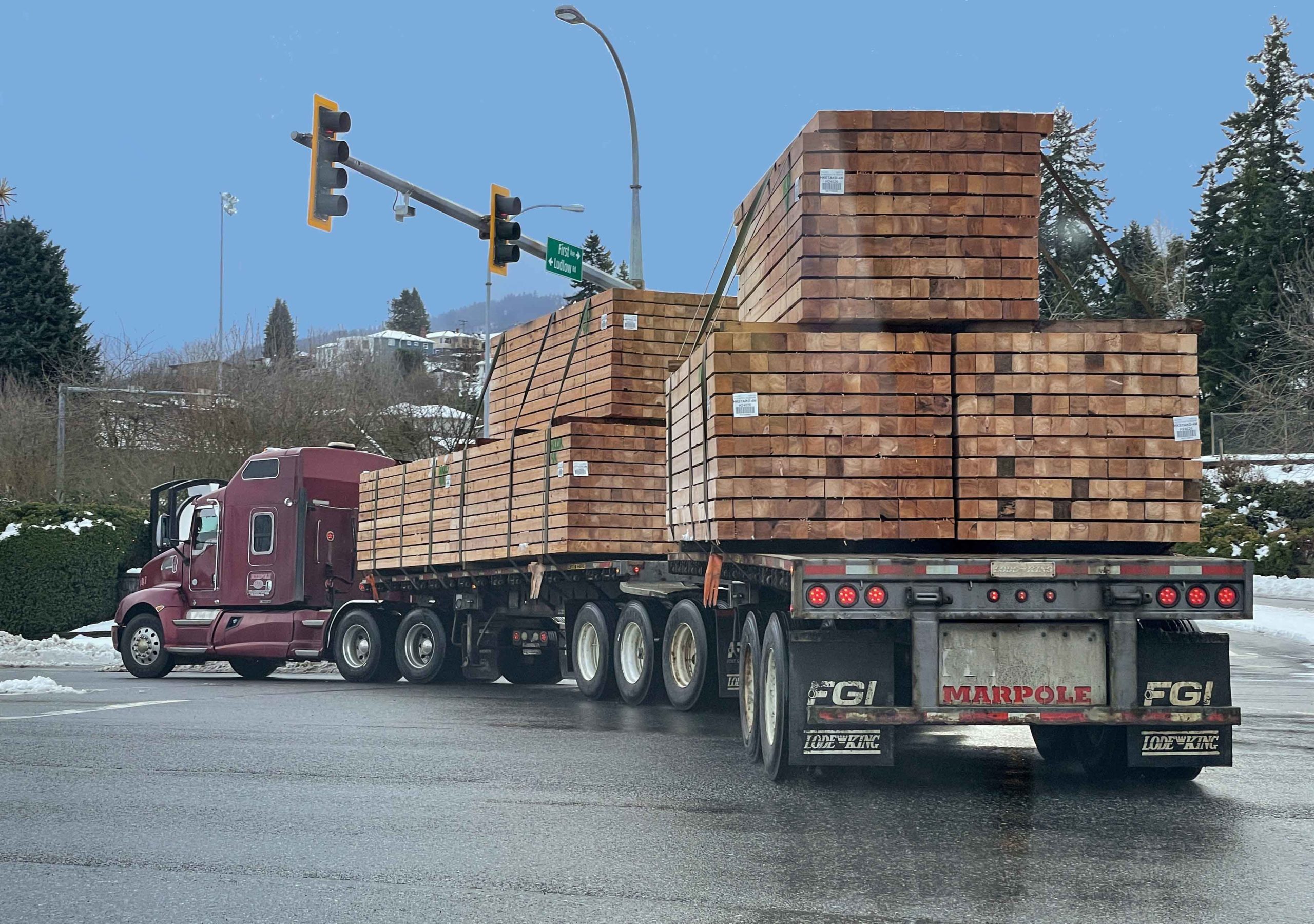 OTTAWA, ON
OTTAWA, ON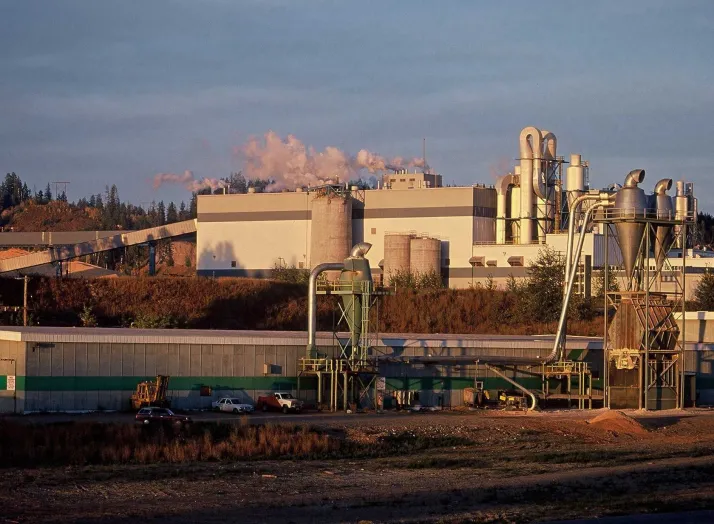

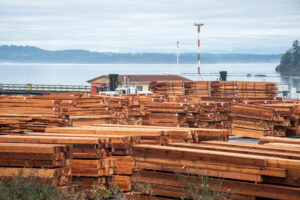 Western Forest Products says the temporary curtailment at its Chemainus sawmill will extend into the new year, while work slowdowns are expected at its other mills across Vancouver Island in December. The WFP curtailment in Chemainus began in June, affecting about 150 workers, with work yet to resume. …Meanwhile, reduced hours are expected at other work sites on the Island later this month. “In the latter half of December, we will take temporary downtime at our Saltair mill in Ladysmith, Duke Point mill in Nanaimo, and Cowichan Bay mill in Duncan,” said Babita Khunkhun, senior director of communications at WFP. “This will involve reduced operating hours, an extended holiday break and adjusted shift schedules.” Khunkhun says regular operations are expected to resume at all of those mills – except for Chemainus – on Jan. 6 “depending on market conditions and available log supply.”
Western Forest Products says the temporary curtailment at its Chemainus sawmill will extend into the new year, while work slowdowns are expected at its other mills across Vancouver Island in December. The WFP curtailment in Chemainus began in June, affecting about 150 workers, with work yet to resume. …Meanwhile, reduced hours are expected at other work sites on the Island later this month. “In the latter half of December, we will take temporary downtime at our Saltair mill in Ladysmith, Duke Point mill in Nanaimo, and Cowichan Bay mill in Duncan,” said Babita Khunkhun, senior director of communications at WFP. “This will involve reduced operating hours, an extended holiday break and adjusted shift schedules.” Khunkhun says regular operations are expected to resume at all of those mills – except for Chemainus – on Jan. 6 “depending on market conditions and available log supply.”
 VANCOUVER, BC
VANCOUVER, BC

 When it comes to what ultimately lies behind Crofton’s impending closure, previous BC Liberal and NDP governments past and present all have much to answer for. Both were at the helm as tumultuous changes rocked BC’s forestry sector. And both did little of consequence in response. The result is not only pain for workers and their families, but a big economic hit for local government. …The first change that governments ignored was the disintegration of what were once highly integrated forest companies. At one point, each of B.C.’s three remaining coastal pulp mills — Crofton, Harmac and Howe Sound — were part of a continuous production chain owned by the same company. In the case of Harmac and Crofton, that company was MacMillan Bloedel, while Howe Sound’s pulp mill was co-owned by Canfor. With integrated companies, all aspects of production from the tree standing in the forest to final products were linked.
When it comes to what ultimately lies behind Crofton’s impending closure, previous BC Liberal and NDP governments past and present all have much to answer for. Both were at the helm as tumultuous changes rocked BC’s forestry sector. And both did little of consequence in response. The result is not only pain for workers and their families, but a big economic hit for local government. …The first change that governments ignored was the disintegration of what were once highly integrated forest companies. At one point, each of B.C.’s three remaining coastal pulp mills — Crofton, Harmac and Howe Sound — were part of a continuous production chain owned by the same company. In the case of Harmac and Crofton, that company was MacMillan Bloedel, while Howe Sound’s pulp mill was co-owned by Canfor. With integrated companies, all aspects of production from the tree standing in the forest to final products were linked.
 Domtar’s announcement of its Crofton pulp and paper mill closure was a major and far-reaching loss for its workers, the North Cowichan community, and the broader forest-industry supply chain across the BC Coast. It is especially difficult knowing that this closure was preventable. Industry, labour and municipal governments have been warning the BC government about the risk of mill closures for many months. The government was given numerous recommendations, solutions, and opportunities that could have helped avoid this outcome, but has largely failed to act with the urgency that was required. …This closure underscores the many challenges facing BC’s coastal forest sector: ongoing constraints on access to economically viable fibre, an uncompetitive business cost structure, and regulatory uncertainty. For TLA members, these pressures threaten the stability of their operations and the forestry-dependent communities they support. The TLA remains committed to working with government and industry partners to stabilize the sector…
Domtar’s announcement of its Crofton pulp and paper mill closure was a major and far-reaching loss for its workers, the North Cowichan community, and the broader forest-industry supply chain across the BC Coast. It is especially difficult knowing that this closure was preventable. Industry, labour and municipal governments have been warning the BC government about the risk of mill closures for many months. The government was given numerous recommendations, solutions, and opportunities that could have helped avoid this outcome, but has largely failed to act with the urgency that was required. …This closure underscores the many challenges facing BC’s coastal forest sector: ongoing constraints on access to economically viable fibre, an uncompetitive business cost structure, and regulatory uncertainty. For TLA members, these pressures threaten the stability of their operations and the forestry-dependent communities they support. The TLA remains committed to working with government and industry partners to stabilize the sector…
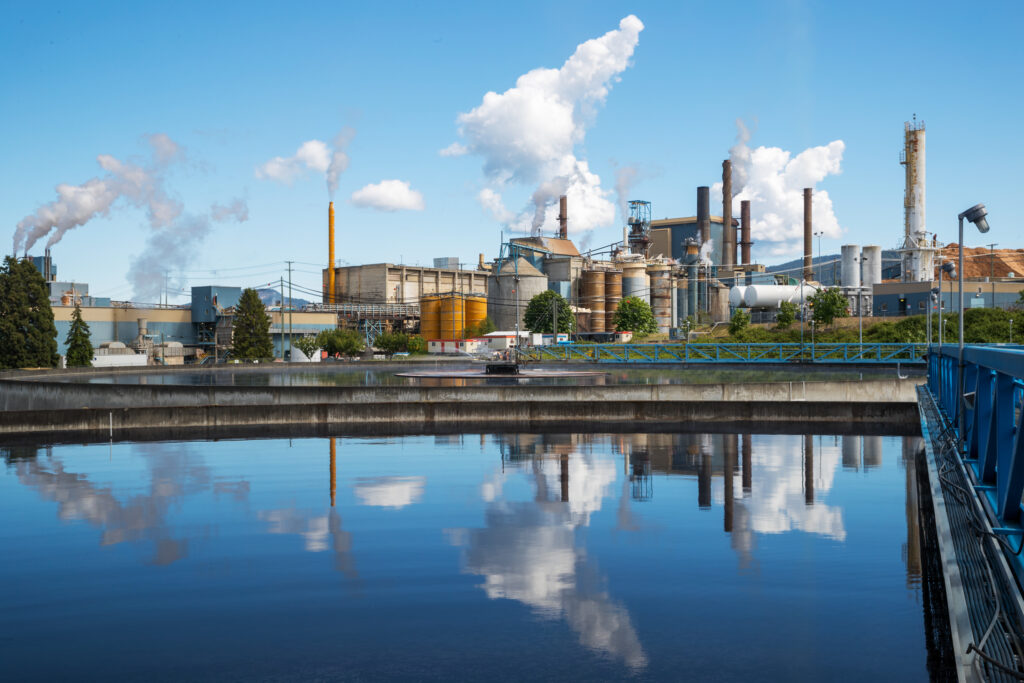

 Lumber futures fell toward $530 per thousand board feet, down nearly 10% from November’s peak, as the market contends with pronounced oversupply and lingering weak demand. Mills and distributors continue to carry elevated inventories, a hangover from early 2025 when buyers front-loaded purchases in anticipation of tariffs, leaving the market with a persistent supply overhang. At the same time, US housing starts and building permits remain below last year’s levels, reflecting a prolonged construction slowdown as easing borrowing costs have yet to materialize in higher new building activity and limit near-term consumption of framing lumber. Demand from renovation and new homebuilding also remains subdued, with housing-related wood products consumption estimated to have declined in 2024 and only a modest recovery expected in 2025.
Lumber futures fell toward $530 per thousand board feet, down nearly 10% from November’s peak, as the market contends with pronounced oversupply and lingering weak demand. Mills and distributors continue to carry elevated inventories, a hangover from early 2025 when buyers front-loaded purchases in anticipation of tariffs, leaving the market with a persistent supply overhang. At the same time, US housing starts and building permits remain below last year’s levels, reflecting a prolonged construction slowdown as easing borrowing costs have yet to materialize in higher new building activity and limit near-term consumption of framing lumber. Demand from renovation and new homebuilding also remains subdued, with housing-related wood products consumption estimated to have declined in 2024 and only a modest recovery expected in 2025.  Vancouver, BC – Canfor Corporation and Canfor Pulp Products Inc. announced today that they have entered into an arrangement agreement pursuant to which Canfor Corp will acquire all of Canfor Pulp’s issued and outstanding common shares not already owned by Canfor Corp and its affiliates pursuant to a court-approved plan of arrangement under the Business Corporations Act. Under the terms of the Arrangement Agreement, the shareholders of Canfor Pulp, other than Canfor Corp and its affiliates, will have the option to receive, for each Canfor Pulp Share held: 0.0425 of a common share of Canfor Corp, or $0.50 in cash. ….Canfor Corp currently owns approximately 54.8% of the issued and outstanding Canfor Pulp Shares. The $0.50 per Canfor Pulp Share represents a premium of 25% to Canfor Pulp’s closing share price on December 2, 2025, on the Toronto Stock Exchange and a premium of 38% based on the 10-day volume-weighted average share price of Canfor Pulp as of December 2, 2025, on the TSX.
Vancouver, BC – Canfor Corporation and Canfor Pulp Products Inc. announced today that they have entered into an arrangement agreement pursuant to which Canfor Corp will acquire all of Canfor Pulp’s issued and outstanding common shares not already owned by Canfor Corp and its affiliates pursuant to a court-approved plan of arrangement under the Business Corporations Act. Under the terms of the Arrangement Agreement, the shareholders of Canfor Pulp, other than Canfor Corp and its affiliates, will have the option to receive, for each Canfor Pulp Share held: 0.0425 of a common share of Canfor Corp, or $0.50 in cash. ….Canfor Corp currently owns approximately 54.8% of the issued and outstanding Canfor Pulp Shares. The $0.50 per Canfor Pulp Share represents a premium of 25% to Canfor Pulp’s closing share price on December 2, 2025, on the Toronto Stock Exchange and a premium of 38% based on the 10-day volume-weighted average share price of Canfor Pulp as of December 2, 2025, on the TSX.
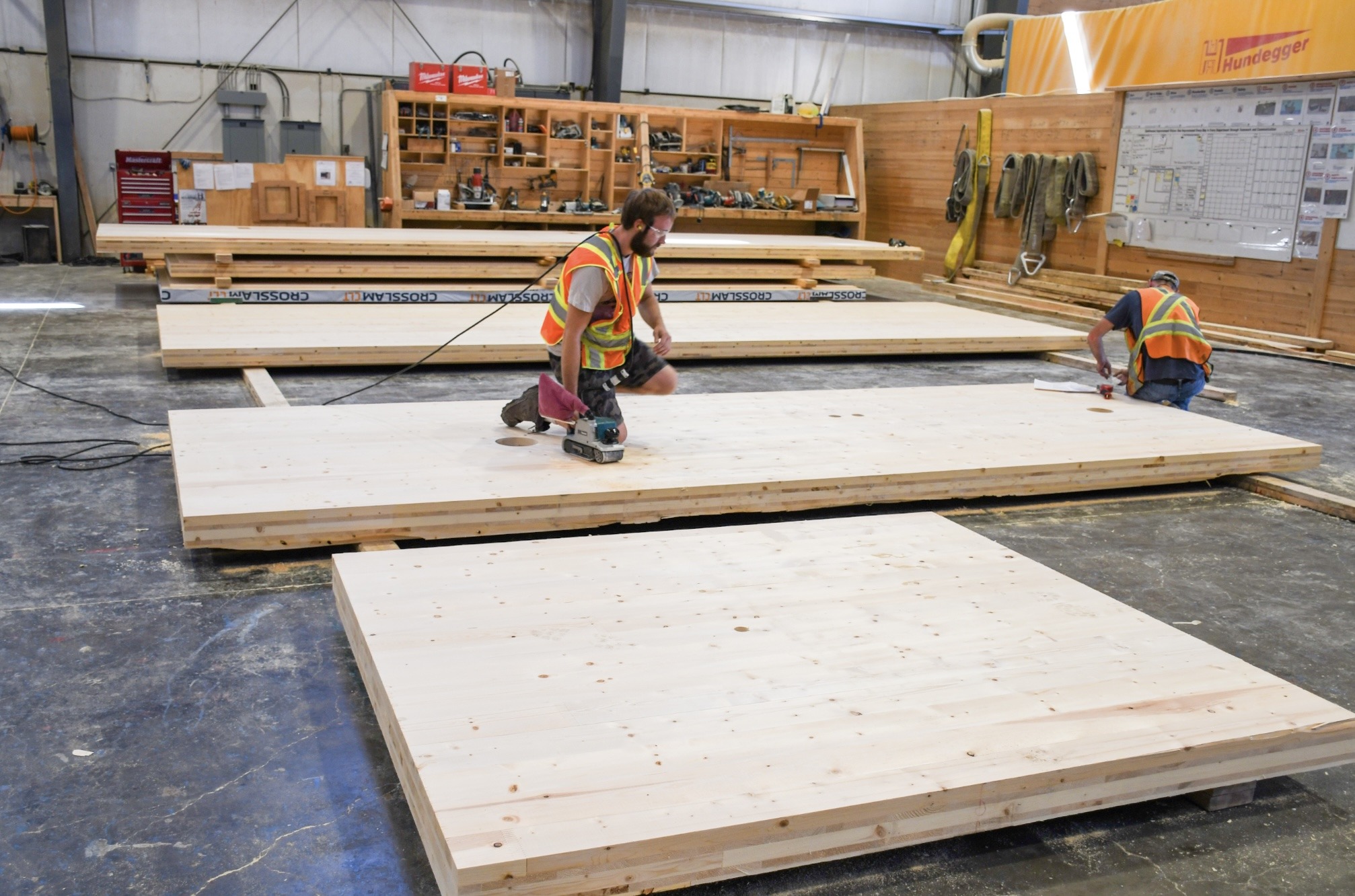 When Prime Minister Mark Carney toured Intelligent City’s advanced manufacturing facility in Delta, B.C. this spring, it was more than just another campaign stop. It signalled that prefabricated and modular construction has moved from the margins to the mainstream of Canada’s housing conversation. That recognition is overdue. If we are serious about tackling Canada’s housing affordability crisis by delivering more homes at scale, governments need to stop paying lip service to the huge potential of off- site construction and start putting it into policy and practice. …First, governments should publish a multi-year prefabricated housing procurement roadmap. Off-site manufacturing depends on predictable, portfolio-scale demand. A provincial roadmap in British Columbia, for example, that consolidates housing needs across ministries, Crown agencies, and municipalities would give factories the confidence to invest in automation, skilled labour, and supply chains.
When Prime Minister Mark Carney toured Intelligent City’s advanced manufacturing facility in Delta, B.C. this spring, it was more than just another campaign stop. It signalled that prefabricated and modular construction has moved from the margins to the mainstream of Canada’s housing conversation. That recognition is overdue. If we are serious about tackling Canada’s housing affordability crisis by delivering more homes at scale, governments need to stop paying lip service to the huge potential of off- site construction and start putting it into policy and practice. …First, governments should publish a multi-year prefabricated housing procurement roadmap. Off-site manufacturing depends on predictable, portfolio-scale demand. A provincial roadmap in British Columbia, for example, that consolidates housing needs across ministries, Crown agencies, and municipalities would give factories the confidence to invest in automation, skilled labour, and supply chains.
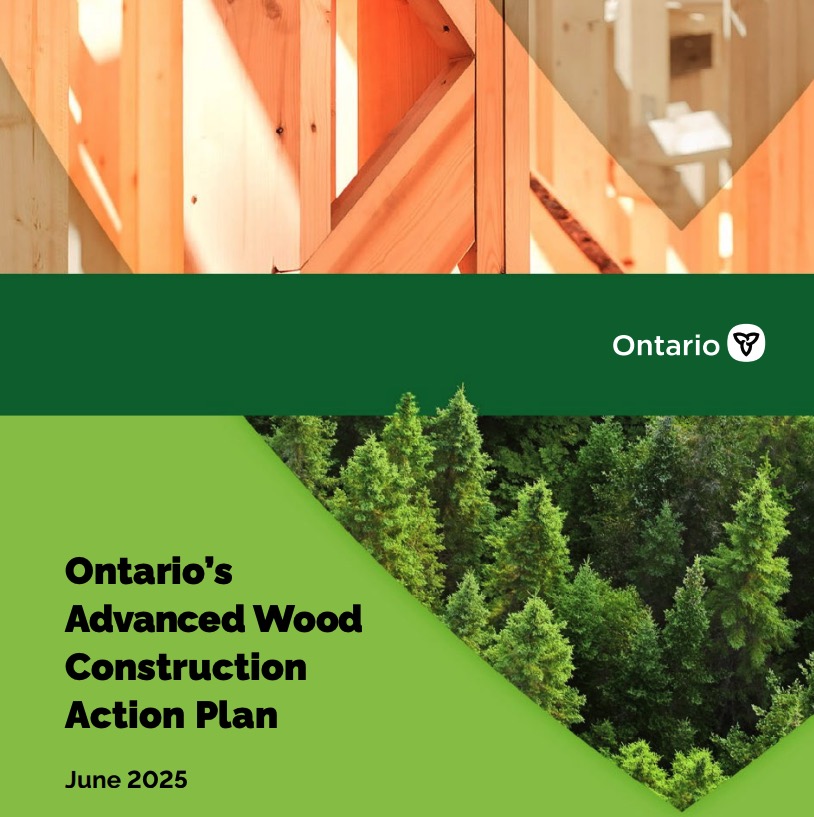 TORONTO — The Ontario government has launched a new working group to guide the implementation of the
TORONTO — The Ontario government has launched a new working group to guide the implementation of the 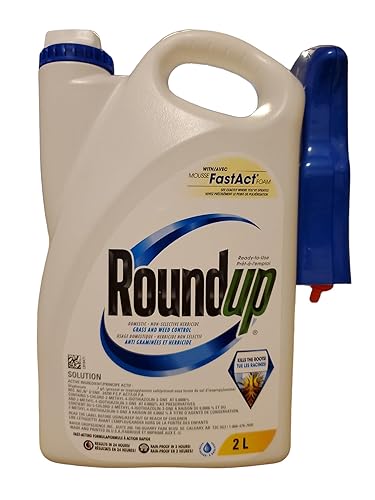

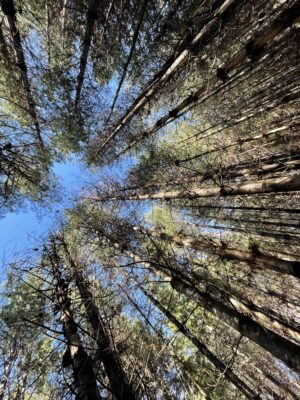 PRINCE GEORGE – Conservation North is calling out Premier David Eby for what they see as inconsistencies in his stance on old-growth logging. They highlight his opposition to logging old-growth forests to keep a Vancouver Island pulp mill running, while remaining quiet about the ongoing old-growth logging happening in the northern regions. …Conservation North argues that in central BC, nearly all the wood supplied to pulp and pellet mills still comes from primary forests, including old-growth areas. …The provincial government said “The interior of B.C. is home to a vast network of lumber sawmills, specialty wood manufacturing facilities, and pulp, paper, and pellet plants. This interconnected sector uses every part of the tree. …The pulp and paper sector is integral to this supply chain, buying lumber sawmill residuals, like sawdust, shavings, and chips, and harvest residuals like branches and bark. …The pulp and paper sector has also been leading the way in using wildfire salvaged wood.
PRINCE GEORGE – Conservation North is calling out Premier David Eby for what they see as inconsistencies in his stance on old-growth logging. They highlight his opposition to logging old-growth forests to keep a Vancouver Island pulp mill running, while remaining quiet about the ongoing old-growth logging happening in the northern regions. …Conservation North argues that in central BC, nearly all the wood supplied to pulp and pellet mills still comes from primary forests, including old-growth areas. …The provincial government said “The interior of B.C. is home to a vast network of lumber sawmills, specialty wood manufacturing facilities, and pulp, paper, and pellet plants. This interconnected sector uses every part of the tree. …The pulp and paper sector is integral to this supply chain, buying lumber sawmill residuals, like sawdust, shavings, and chips, and harvest residuals like branches and bark. …The pulp and paper sector has also been leading the way in using wildfire salvaged wood. British Columbia’s logging agency has changed a policy that conserved remnant old-growth forest in the province’s northwest, with a government briefing note showing a plan to open those areas for harvesting has been approved. The note, obtained by The Canadian Press and written by a BC Timber Sales manager in the Babine region, acknowledged the shift “may invoke scrutiny” from conservationist environmental groups. It says First Nations in the Bulkley, Morice and Lakes timber supply areas do not support old-growth logging deferrals recommended by a provincially appointed panel in 2021,and continuing to conserve remnant stands “does not demonstrate respect of the First Nations’ responses” to that process. …Independent ecologist Rachel Holt says the briefing note demonstrates a lack of understanding within BC Timber Sales about “the importance of … these irrecoverable ecological values.” But the crisis in B.C.’s forests is not just ecological.
British Columbia’s logging agency has changed a policy that conserved remnant old-growth forest in the province’s northwest, with a government briefing note showing a plan to open those areas for harvesting has been approved. The note, obtained by The Canadian Press and written by a BC Timber Sales manager in the Babine region, acknowledged the shift “may invoke scrutiny” from conservationist environmental groups. It says First Nations in the Bulkley, Morice and Lakes timber supply areas do not support old-growth logging deferrals recommended by a provincially appointed panel in 2021,and continuing to conserve remnant stands “does not demonstrate respect of the First Nations’ responses” to that process. …Independent ecologist Rachel Holt says the briefing note demonstrates a lack of understanding within BC Timber Sales about “the importance of … these irrecoverable ecological values.” But the crisis in B.C.’s forests is not just ecological.

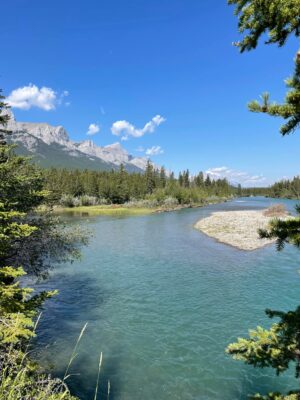 NOOTKA SOUND, BC — Optimism for the future of Chinook salmon is swimming up Muchalat River near the town of Gold River, BC in Mowachaht/Muchalaht First Nations (MMFN) territory. Kent O’Neill, of the Nootka Sound Watershed Society (NSWS), says he observed hundreds of fish using a newly restored gravel spawning pad this fall. …Navigating a storm of challenges from historical logging practices to droughty summers, Chinook salmon in the region were assessed as Threatened by the Committee on the Status of Endangered Wildlife in Canada in 2020. To revive local Chinook salmon stocks, a collective effort led by NSWS, Ecofish Research, a Trinity Consultants Canada team, MMFN and the Pacific Salmon Foundation (PSF) was hatched. …Western Forest Products (WFP) also played a major role by providing the gravel and access to the forest service roads. “We wouldn’t have been able to do this project without WFP,” said O’Neill.
NOOTKA SOUND, BC — Optimism for the future of Chinook salmon is swimming up Muchalat River near the town of Gold River, BC in Mowachaht/Muchalaht First Nations (MMFN) territory. Kent O’Neill, of the Nootka Sound Watershed Society (NSWS), says he observed hundreds of fish using a newly restored gravel spawning pad this fall. …Navigating a storm of challenges from historical logging practices to droughty summers, Chinook salmon in the region were assessed as Threatened by the Committee on the Status of Endangered Wildlife in Canada in 2020. To revive local Chinook salmon stocks, a collective effort led by NSWS, Ecofish Research, a Trinity Consultants Canada team, MMFN and the Pacific Salmon Foundation (PSF) was hatched. …Western Forest Products (WFP) also played a major role by providing the gravel and access to the forest service roads. “We wouldn’t have been able to do this project without WFP,” said O’Neill.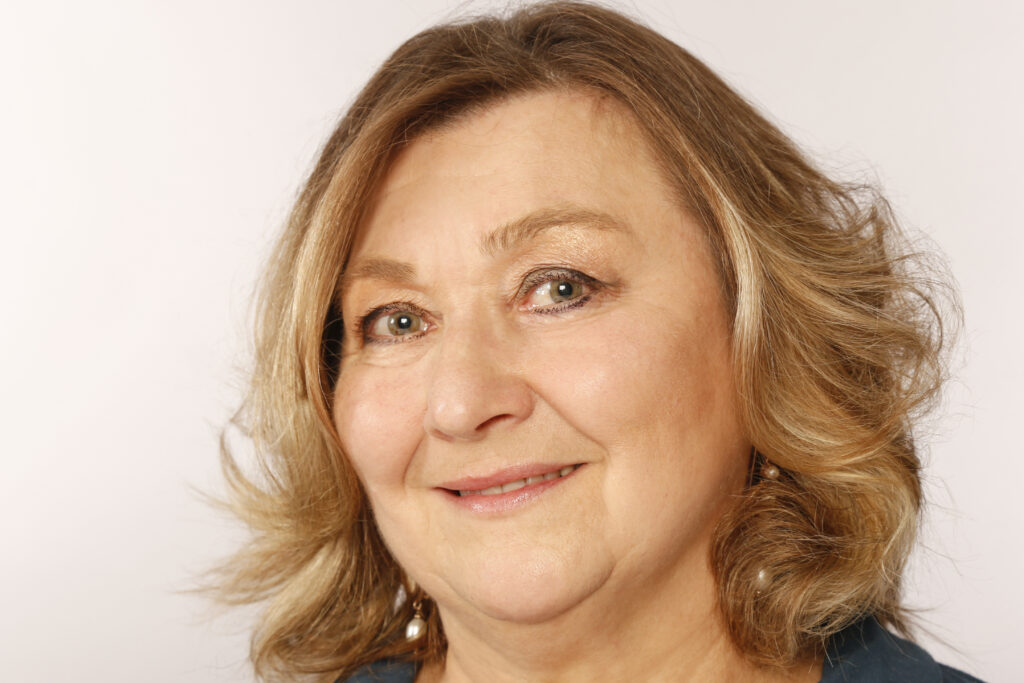

 We tend to take logging roads for granted as an inherent right of access to Crown land. Their importance was recently reinforced when, just before the first snowfall, we travelled on one of the longest continuous and scenic forestry roads in the province. Ontario’s forest industry is critical to the provincial economy and many northern and rural communities. In 2023, the forest industry contributed $5.4 billion to Ontario’s Gross Domestic Product (GDP) and generated $21.6 billion in total revenue. The sector supported approximately 128,000 direct, indirect, and induced jobs in 2024, many of which are in Indigenous, rural, and northern communities. …The Ontario Forest Industries Association’s policy advisor, Adrian Smith said, “Forest access roads serve far more than the forestry sector. Built and maintained by our sector, they provide vital infrastructure. Forestry companies invest millions of dollars in grading, resurfacing, bridge and culvert upkeep, and winter snow clearing to keep this extensive network safe and reliable.
We tend to take logging roads for granted as an inherent right of access to Crown land. Their importance was recently reinforced when, just before the first snowfall, we travelled on one of the longest continuous and scenic forestry roads in the province. Ontario’s forest industry is critical to the provincial economy and many northern and rural communities. In 2023, the forest industry contributed $5.4 billion to Ontario’s Gross Domestic Product (GDP) and generated $21.6 billion in total revenue. The sector supported approximately 128,000 direct, indirect, and induced jobs in 2024, many of which are in Indigenous, rural, and northern communities. …The Ontario Forest Industries Association’s policy advisor, Adrian Smith said, “Forest access roads serve far more than the forestry sector. Built and maintained by our sector, they provide vital infrastructure. Forestry companies invest millions of dollars in grading, resurfacing, bridge and culvert upkeep, and winter snow clearing to keep this extensive network safe and reliable.
 The Climate Risk Institute (CRI), in collaboration with the Canadian Institute of Forestry/Institut forestier du Canada (CIF-IFC) and with contributions from the Ontario Ministry of Natural Resources (MNR), have developed a Climate Adaptation and Resilience Professional Development Program for Forest Professionals in Canada. This course is designed to provide forestry professionals and practitioners with new knowledge of climate change, climate impacts and adaptation strategies to complement their existing knowledge base, strengthen climate resilience in forest management, and build capacity across the sector to integrate adaptation measures into daily practice. Funded in part by Natural Resources Canada through the
The Climate Risk Institute (CRI), in collaboration with the Canadian Institute of Forestry/Institut forestier du Canada (CIF-IFC) and with contributions from the Ontario Ministry of Natural Resources (MNR), have developed a Climate Adaptation and Resilience Professional Development Program for Forest Professionals in Canada. This course is designed to provide forestry professionals and practitioners with new knowledge of climate change, climate impacts and adaptation strategies to complement their existing knowledge base, strengthen climate resilience in forest management, and build capacity across the sector to integrate adaptation measures into daily practice. Funded in part by Natural Resources Canada through the 
 Thunder Bay – For more than 100 years, the pulp and paper mill in Dryden has been the most important building in this small city in northwestern Ontario. It was the engine of the local economy, providing jobs for generations and connecting Dryden to a larger network of forest products that includes Thunder Bay and other communities in the area. But the same industrial complex also caused one of Canada’s worst environmental disasters. In the 1960s and 1970s, a chlor-alkali plant that was part of the mill dumped an estimated 9,000 to 10,000 kilograms (about 10 metric tons) of mercury into the English–Wabigoon River system. …People have lived with symptoms of mercury poisoning for generations, including Minamata disease. Commercial fishing was stopped, and guiding jobs disappeared. The main question is still painfully unanswered decades later: Who should pay to clean up the river, fix the land, and help the people who were hurt?
Thunder Bay – For more than 100 years, the pulp and paper mill in Dryden has been the most important building in this small city in northwestern Ontario. It was the engine of the local economy, providing jobs for generations and connecting Dryden to a larger network of forest products that includes Thunder Bay and other communities in the area. But the same industrial complex also caused one of Canada’s worst environmental disasters. In the 1960s and 1970s, a chlor-alkali plant that was part of the mill dumped an estimated 9,000 to 10,000 kilograms (about 10 metric tons) of mercury into the English–Wabigoon River system. …People have lived with symptoms of mercury poisoning for generations, including Minamata disease. Commercial fishing was stopped, and guiding jobs disappeared. The main question is still painfully unanswered decades later: Who should pay to clean up the river, fix the land, and help the people who were hurt?